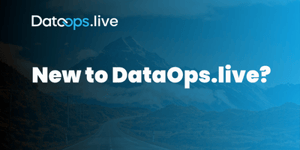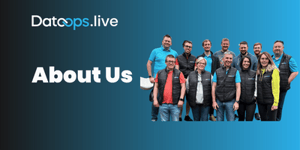This is the second blog in a 4 part series on DataOps and AIOps. See the first blog here.
We all know efficiency is essential in today’s fast-paced world of tech, and according to Gartner, DataOps can make your team up to 10 times more efficient. That’s not just a little bump in productivity—that’s a game-changer. But here’s the real question: What are you doing with all that extra time?
Sure, some of it will go toward delivering “more of the same”—keeping the lights on and meeting the ever-growing demands of the business. And that’s important. But if you’re just using this newfound efficiency to churn out more of what you’ve already been doing, you’re missing a huge opportunity.
The Teams That Are Excelling Are Being Disruptive—In a Good Way
The most successful teams aren’t just satisfied with keeping up; they’re taking a good chunk of that 10x efficiency boost and using it to be disruptive. Not in the sense of breaking things but by getting ahead of the curve. They’re looking at the next wave of technologies and figuring out which will make a real impact in the next 6-24 months.
Think about it: instead of spending all their time firefighting or just keeping up with the status quo, these teams have the bandwidth to focus on what’s next. And that’s where the magic happens. They’re not just reacting to trends—they’re driving them. They’re asking the big questions, like: What’s the next big innovation? How can we leverage it before our competitors?
Where Can You Be Disruptive?
With the extra time that DataOps gives you, you can look beyond your immediate deliverables and start experimenting with emerging technologies. Whether AI or machine learning, there’s always something new on the horizon. The trick is figuring out which one will move the needle for your business.
Take Generative AI as an example. While many are still figuring out how to implement it effectively, the teams already playing with it will take the lead in the next few years. They’re using their extra capacity not just to scale existing processes but to experiment, iterate, and learn. And when the time comes, they’re ready to go big.
It’s the same story with data-driven automation. If your team has cracked the efficiency code with DataOps, you now have the time to explore how you can automate even more of your workflows, freeing up even more capacity to focus on strategic, high-impact projects.
Don’t Forget the People: Keeping Your Best Talent Engaged
Here’s something that often gets totally overlooked when we talk about efficiency: people and retention. How long do you think your data engineers are going to stick around if they’re grinding out SQL, Python, or whatever every single day with no change? Now, imagine your competitor is offering them time to learn, experiment, and play with new technologies—things that are not only fun for engineers but great for their CVs.
I once worked for a VP of Engineering who loved to share this joke: “If I train my staff, they might leave… but the problem is, if I don’t, they might stay!” And he had a point.
If all your team is doing is the same repetitive work day in and day out, chances are they’ll get bored, disengaged, and eventually look for greener pastures. But if you can free up time for them to innovate and explore the latest tech, they’ll stay motivated, engaged, and loyal. Engineers thrive on challenges, creativity, and the opportunity to do something new. Give them that space, and they will stick around and drive your business forward with their energy and ideas.
So, that 10x efficiency gain from DataOps? It’s not just about cranking out more code. It’s also about giving your team the breathing room to think big, push boundaries, and stay excited about their work. And when your team is motivated and constantly growing, your company reaps the rewards.
Don’t Just Meet Expectations—Exceed Them
The bottom line is this: if you’re only using the time you save with DataOps to keep up with the current workload, you’re missing a golden opportunity. The teams that are really excelling are the ones who are using that extra time to push boundaries, experiment with the next wave of technology, and keep their people happy and engaged.
Think about how much further you could take your organization if you invested even a portion of that efficiency boost into innovation and people development. Instead of just delivering on what’s asked of you, you can go beyond and deliver what no one’s even thought of yet—and keep your best talent along for the ride.
The 6-24 Month Window: Where the Real Impact Happens
This isn’t about focusing on technologies that are decades away or purely theoretical. The sweet spot is finding the innovations that will truly start making an impact in the next 6 to 24 months. That’s the window where you can get ahead. If you can identify and invest in these technologies now, you’ll be leading the charge when everyone else is still catching up.
In Conclusion: Use Your 10x Efficiency to Get Disruptive (in the Best Way Possible)
Thanks to DataOps, we’ve been given a unique opportunity—a 10x efficiency boost that frees us from the grind of just keeping up. But the best teams aren’t using that extra time to maintain the status quo. They’re being strategically disruptive. They’re using that saved time and energy to experiment with new technologies, look toward the future, and keep their people engaged and motivated.
So, the next time you find yourself with some extra capacity, don’t just ask, How can I deliver more of the same? Ask, How can I push the boundaries and keep my team excited about their work?
Because the teams that are asking those questions today are the ones that will be leading the pack tomorrow.





